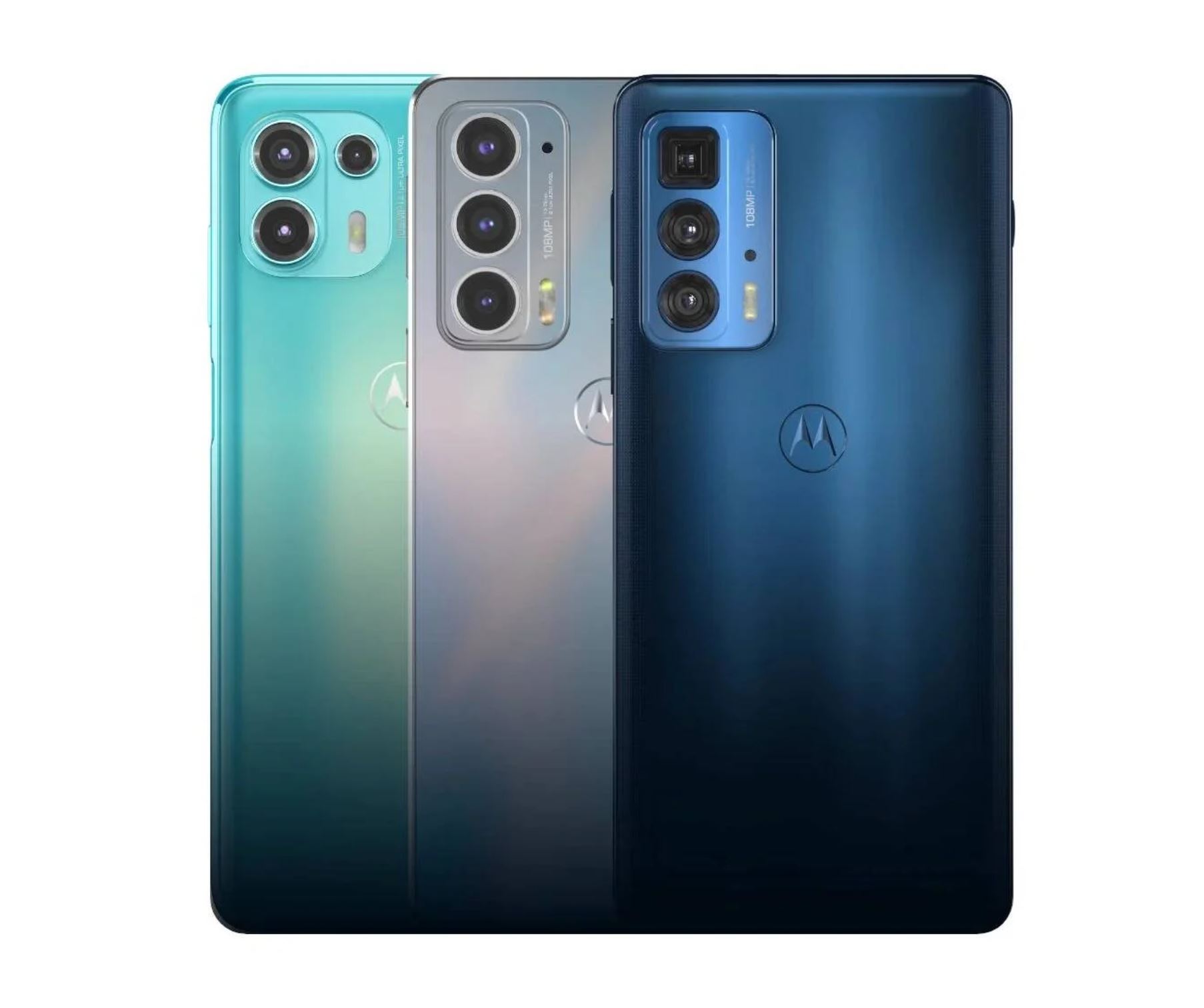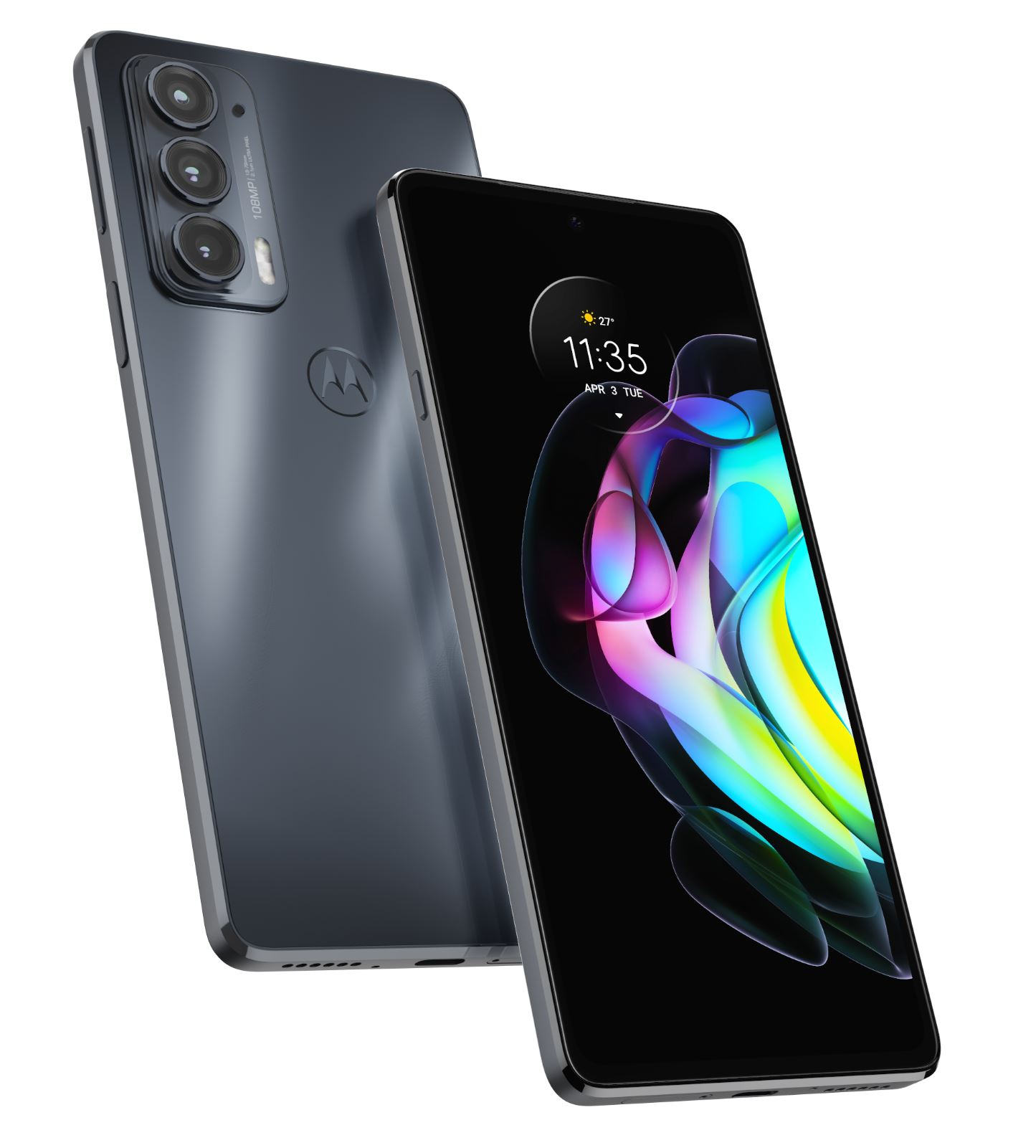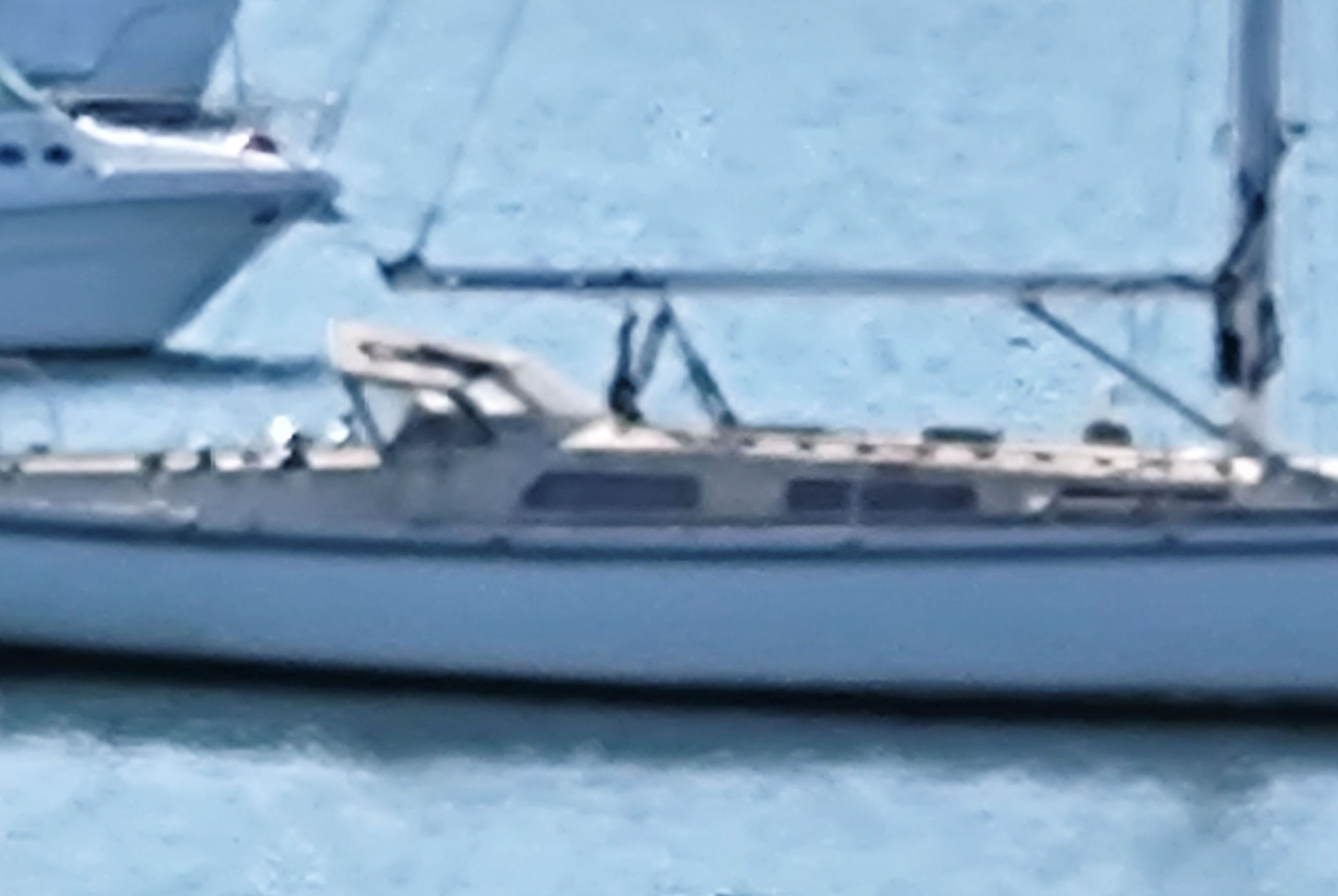The Motorola Edge 20 is the middle child in its premium Edge 20 range. As number two, it has to try harder, and it gives Motorola a phone that, at $699, is the just-right Edge.
Interestingly we have all three Motorola Edge 20 models for review, as well as the new Moto g50. All Edge’s have a similar look and feel, 6.7” screens and 30W Turbo Charge batteries in a good, better, best scenario – stay tuned.
Where the $200 dearer Pro model gets a 100% DCI-P3, Gorilla Glass 5 screen, faster processor, more ram and storage, USB-C 3.1 and slightly more battery life – frankly, this is better value with just as good a pedigree.
We compare all three Motorola Edge models here, and you can find the Motorola Edge 20 Pro review here 8.7/10.
Get ‘ready for’ Motorola Edge 20
Motorola has added ‘ready for’, an Android desktop experience on an external PC. We have a full review and user guide that you should read as each Edge supports different Ready For features and connectivity (The Edge 20 Pro does everything).
Motorola Edge 20 5G Model XT2143-1 8/128GB Dual Sim
| Australian website | here |
| Price: | $699 |
| Colours | Frosted Onyx |
| From: | Motorola online, JB Hi-Fi, Good Guys, Officeworks |
| Warranty: | 12-months ACL |
| Country of Manufacture: | China |
| Company | Owned by Lenovo (Est 1984) – a multinational technology company with its main operational headquarters in Beijing and Morrisville, North Carolina. It is the world’s largest PC maker. It purchased Motorola Mobility from Google in 2014. Most of Lenovo’s smartphone business is now under the Motorola brand, and it has grand plans to become a ‘top five’ smartphone maker. |
| More | Other GadgetGuy Motorola news and reviews here |
Grey market – no Australian warranty
All genuine Australian 5G models use unique Australian 5G sub-6Ghz and 5G low-band frequencies and require local activation first. That means a grey market phone likely won’t be able to use 5G here.
We have named and shamed the major grey marketers here. If you are going to spend this much money, get a genuine ‘Made for Australia’ model.
First impression – another glass slab
Interestingly when I was unpacking up the Motorola Edge 20 to fit the Boost sim, thus removing the TPU bumper cover, I discovered an entirely different build style. While the Pro has nice rounded edges and a PMMA acrylic glass back, this has very squared edges, a flat PMMA back, is a full 1mm thinner and a lot lighter.
Put the TPU cover back on – you won’t know the difference. So for this review, we will point out any subtle differences (usually in brackets) that may make you buy the Pro at $200 more.
Screen – 1 billion colours AMOLED Goodness
As far as we can ascertain, the Motorola Edge 20 Pro and Edge 20 screens are the same, except for lower-cost Gorilla Glass 3 on the latter. Tests show insignificant screen colour or gamut differences.
| Size | 6.7”, 2400 x 1080p, 393 ppi, 20:9 ratio |
| Type | Centre O-hole selfie, flat, AMOLED with Gorilla Glass 3 (Pro has 5) |
| Refresh | Auto up to 120Hz, Fixed 144Hz or 60Hz |
| Colours | 10-bit 1.07 billion |
| Gamut | Claim: 450 nits (typical) tp 650 (Max adaptive) Contrast: infinite Colour temperature: 6500°K Test: 433-457 nits fairly even over the screen, 660 nits max Delta E 3 (<4 is good) 100% DCI-P3 (movies) HDR10+ |
| Daylight Viewing angle Always on Display | Yes Good off-angle viewing but develops a blue cast past 135° Yes |
| DRM | Widevine L1 HDCP 2.3 plays Netflix and Amazon FHD HDR content |
| Gaming | Fixed 60/144Hz refresh available, but few mobile games support the latter. Up to 576Hz touch latency. |
The 144Hz refresh is more a gimmick as there are so few little apps that it supports. Overall the screen is a strong point with great colours and brightness.
Processor – a great mid-range choice
The Edge 20 Pro comes with the Qualcomm SD870, but the Edge 20 uses the newer SD778G that has a lot going for it. Naturally, it is not as fast (about 30% slower), but it has 6th Gen AI and supports Wi-Fi 6E (2400Mbps). It is a good processor with loads of power and better power management for longer battery life – suitable for the task.
| SoC | Qualcomm SD778G 6nm 1×2.4GHz, 3×2.2GHz, 4×1.90GHz Test: GeekBench single/multi-core: 767/32740 (Similar to an Exynos 990) (947/3070 similar to a Samsung Galaxy S21 Exynos 2100) |
| GPU | Adreno 642L (650) Test: Open CL: 2199 (3660) Vulcan: 2225 (4195) |
| Modem and Other | X53 5G (X55) 6th Gen AI 13 TOPS (5th 15 TOPS) QC4+ fast charge compatible |
| RAM Storage | 8GB LPDDR4 (12GB LPDDR5) 128GB UFS 2.2 (95GB free) – no microSD (256GB UFS 3.1 – no microSD) Test: Sequential read/write Internal: 689/380 (975/492MBps) External 1GB Orico iMacth USB-C 3.1 Gen 2: 29/10 (424/119MBps) |
| Throttle 15-minute test | Max: 221,267 (254,877) GIPS, Average: 204,893 (250,573) – 13% loss (11%) over 15 minutes CPU temp reached 50° (77°). This 6nm processor is far more energy-efficient and runs cooler. |
Motorola has not shaved too many dollars by departing far from the Qualcomm spec. It has saved money in the processor, less/slower ram, and back to USB-C 2.0 that does not support ALT DP (Display Port), affecting some ‘Ready for’ connectivity.
Comms – 2400Mbps with the rigth router
| Wi-Fi | Wi-Fi 6 AX 2×2 MU-MIMO 2400Mbps (1200Mbps) |
| Test -dBM/ Mbps | Signal Strength 5Ghz – distance from Netgear RAX200, AX11000, 12 stream router -dBM lower is better, and Mbps higher is better 2m: -33/2400 (-32/1200) 5m: -52/2400 (-55/1200) 10m: -62/864 (-65/720) |
| Bluetooth | BT 5.2 (5.1) |
| GPS | Dual and accuracy <2m – excellent (same) |
| NFC | Yes PayWave (same) |
| USB-C | USB-C 2.0 480Mbps (65MBps) half-duplex achieving a maximum of about 30MBps UL/DL (USB-C 3.1 Gen1 5Gbps) |
| Sensors | Combo Accelerometer and Gyroscope, e-Compass, Proximity, Ambient Light, Fingerprint sensor on the power button (same) |
Apart from USB-C 2.0 (that all phones have in this price bracket), it is nice to see 2400Mbps Wi-Fi data transfer rates, BT 5.2 and a dual-band GPS. You normally spend more to get that!
LTE and 5G – very strong signal strength
| SIM | Dual sim either 5G or 4G or both (if using 5G, it is always active) with dual ringtones |
| Support | VoLTE – carrier dependent – generally yes Wi-Fi calling – Carrier dependent – generally yes |
| Tests | |
| UL/DL | 24/19Mbps/35ms (30/26Mpbs/33ms – average) |
| LTE Band | 1, 2, 3, 4, 5, 7, 8, 12, 13, 17, 20, 26, 28, 32, 34, 38, 39, 40, 41, 42, 43, 66 This a world phone |
| 5G | n1, n3, n5, n7, n8, n28, n38, n41, n66, n77, n78 This supports n78 sub-6Ghz (all carriers) and Telstra n5 and Vodafone n28 low-band. It does not support Optus n40 low band. |
| Test | Using a Boost Mobile (Telstra retail network) sim at 1km line-of-sight from Telstra tower. Expressed as -dBm (lower is better) and Femtowatts (fW) or picowatts (pW) where higher is better: Tower (nearest to furthest) 1: -84/4pW (-84/4pW) 2: -91/1.3pW (-92/630fW) 3: -97/200fW (-99/125.9fW) 4: found, but speeds were unusable It reflects excellent antenna design and is suited for city, suburbs and regional use. |
A very impressive speed and antenna result. The only disappointment is that it does not have n40 for Optus low-band 5G Low-band repurposes 3G and eventually 4G bands to give wider 5G coverage at the lower 4G speeds.
Battery
| Battery Charger | 4000 (4500mAh) 5V/3A/15W, 9V/3A/27W and 10V/3A/30W QC 3.0 (same) |
| Charger | 0-100% charge – <60 minutes (same) Using 5V/3A standard USB charger and cable – 3.25 hours (3.5 hours) |
| Tests Adaptive screen rate unless shown | 100% load everything on, battery drain – 4.5 hours (4 hours) PC Mark Work 3 battery test: 10 hours 26 minutes (11 hours 36 minutes) GFX Benchmark T-Rex: 341.7 minutes (5.7 hours) and 6113 frames (348.3 minutes 5.81 hours, 6746 frames) GFX Benchmark Manhattan 3.1 144Hz: Out of Memory error – would not run (177.1 minutes (2.95 hours) 5115 frames Idle drain screen off: <200mA (about 22 days) |
While it comes with a QC 3.0, the SoC is QC 4.0+ compatible. That means it can use any USB-C PD charger, and we suspect it will charge even faster. Overall very similar results to the Edge 20 Pro – the 6nm SD778G SoC is more power-efficient and compensates for the slightly smaller battery.
Sound – mono
| Speakers | Mono earpiece and down-firing speaker. It is not fair to measure the sound signature on a mono speaker system. The primary use is for clear voice. It is not for music or movies with no bass or mid before 1000Hz and no treble after 10kHz. There is no sound stage. (same) |
| AMP | Qualcomm Aqstic mono |
| BT codecs | Codecs SBC, AAC (Apple), aptX, aptX HD, aptX Adpative, apts TWS+, LDAC Sony Hi-Res (same) |
| Presets | Movie, Music, Game, and Podcast – makes absolutely no difference over the in-built speaker (same) |
| Mic | Two – top, bottom for effective noise cancellation (3 for video/audio recording) |
| 3.5mm | No – has a USB-C to 3.5mm DAC and buds (no DAC or buds) |
| Tests dB Anything over 80dB is excellent | Media – 75 (70) Ring – 70 (75) Alarm – 75 (80) Earpiece – (55) Hands-free – excellent noise cancelling (Crystal Talk AI) but not quite loud enough |
| Headphone | The BT 5.21 drove our reference Sony WH-1000xM4 in SBC, AAC and LDAC modes and provided good clear sound and plenty of volume. We also tested the xM3 version for aptX – ditto. You can select a preset sound profile for your headphones – 3D stereo, home cinema, live or custom. |
Many competitors have stereo micro-speakers, but invariably users listen to music over headphones.
Build – PASS
| Size/Weight | 163 x 76 x 6.99 mm x 163g (163 x 76 x 7.99 mm x 190g) |
| Colours | Frosted Onyx – vacuum paint deposit on PMMA (a.k.a. acrylic glass). |
| Build | Front: Gorilla Glass 3 (5) Frame: Alloy (same) Back: PMMA flat (curved) |
| IP | 52 – some dust ingress protection and dripping water 3mm per minute (same) |
| In the box | Bumper cover (same) 30W charger USB-C to USB-C cable USB-C to 3.6mmDAC and buds |
IP52 means so little that it is hardly worth quoting. If water resistance is important, then you need to look at at least IP67.
Android 11 – plus two upgrades
| Android | Google Android 11 Security patch date: 1 August 2021 (September review) |
| UI | MY UX – a light overlay that adds value to Android |
| Clean Android install. All standard apps, Google Lens and Assistant. Dedicated Google Assistant key. | |
| Bloatware | Mostly productivity and utilities |
| Update Policy | Edge 20 Series will receive at least two Android OS upgrades (12 and 13) and bi-monthly security patches. |
| Security | Fingerprint in the power button: Test 10/10 FaceID: 7/10 Motorola ThinkShield offers business-grade hardware and software security protection against malware, phishing, network attacks, and more threats. |
It offers a reasonably competitive upgrade/update policy, and MY UX adds considerable value to stock Android.
Missing – in comparison to some competitive handsets
| IP rating | IP52 is a joke |
| 3.5mm | Not a deal-breaker, but at least we get a USB-C to 3.5mm DAC cable and Buds |
| Qi Wireless | Not a deal-breaker and is rarely found at this price. |
| MicroSD | No, and USB-C 2.0 does not compensate |
Camera – 108MP snapper
It is similar to the Motorola Edge 20 Pro. The only differences are the 8MP Periscope becomes an 8MP 3X Telephoto (same sensor), it has later 6th Generation AI (5th) and less processing power and RAM. In other words, apart from 50X periscope zoom, we should not see much of a difference.
I like this camera setup because it has a massive 108MP primary sensor (bins to 12MP), an 8MP Telephoto 3X zoom and a 16MP Ultra-wide. We also managed to find the sensor models used, giving us some confidence in the setup.
On the plus side, Motorola’s move to MY UX from pure Android has allowed it to focus on adding more depth and features to the camera app – it shows. Where Motorola traditionally took ‘capable’ shots, it is now up there with the best – its camera app and AI expertise can only get better.
On the negative side, no optical image stabilisation (OIS) on the primary 108MP camera makes shooting at that level difficult without a tripod. It also is a true image – no AI. But after binning after 12MP binning it has lashings of AI.
Camera summary – it is up there!
| Camera | Primary 108MP bins to 12MP | Ultra-wide and macro 16MP | Telephoto 8MP | Selfie 32MP bins to 8MP |
| Sensor | Samsung S5KHM2 | OV16A10 | OV08A10 | OV32B40 |
| Focus | Super PDAF | Contrast AF | AF | AF |
| Aperture f-stop | f/1.9 | f/2.2 | f/2.4 | f/2.2 |
| Pixel size um | .7 bins to 2.1um | 1.0 | 1.0 | .7 bins to 1.4um |
| FOV° and cropped | (71.1°) | 119 | (62.9°) | |
| Stabilisation | EIS for video | EIS | OIS | EIS |
| Flash | Dual LED | Screen fill | ||
| Zoom | 5X optical 20X digital 50X hybrid | |||
| Video Max | 4K@30fps not stabilised | 1080p@30fps | 1080p@60fps | 1080p@30fps |
| Features | Macro Slow-motion AR Stickers Dual Capture Spot Colour Super Slow Motion Timelapse Hyperlapse Portrait Other features: High-res digital zoom (up to 20x) Video stabilisation Audio Zoom Video snapshot (up to 9 MP) | Group Selfie Live Filter Dual Capture Spot Colour Night Vision Cinemagraph Portrait (w/ HDR and Face beauty) Artificial intelligence: Auto Smile Capture Gesture Capture Shot Optimisation Low Light AI Selfie Other features: Burst shot Timer Assistive Grid Watermark Leveler RAW photo output Selfie animation Face beauty HDR Active photos |
Daylight, outdoors
Macro
Indoors Office Light (400 lumens)
Bokeh
Low light (room with less than 100 lumens)
Selfie
The 32MP bins to 8MP and produces a nice colourful shot. There are a lot of effects which you can play with.
Video
You can shoot up to 4K@30fps, with EIS. It uses a sensor crop rather than trying to process 108MP. 1080p@60/30fps is what you will mainly use. Great daylight, office light and even low light performance and the three mics make a real difference in the audio track.
GadgetGuy’s take
The Motorola Edge 20 gives it a device to win the lion’s share of the $699 business. It focuses on what is important and addresses these pain points very well.
The Qualcomm SD778G is a reasonably new SoC. At present, no other Australian phone uses the SD778G SoC or has a 108MP camera so, competition tends to be on price. As such, it is the outright mid-range winner
And that begs the question – do you need to spend $200 more for the Pro?
If I used the USB-C 3.1 for ‘ready for’ and wanted more RAM/Storage. The Periscope camera is not that much better than the Telephoto. But in practice, these are so close that the Edge 20 and its $200 saving makes it my pick.
Rating explanation
From September 2021, we have adjusted our ratings to give us more ‘headroom’ to recognise exceptional features and performance. Until now, 8/10 was considered a ‘pass’. It is now 6/10. If you compare the Edge 20 Pro with older smartphone reviews, reduce them by two points.
The Motorola Edge 20 starts at a pass mark. Add the partial (no USB-C cable) implementation of ‘ready for’, its two Android version upgrades, a great (although not perfect) camera, solid battery life, excellent phone reception and support from Motorola Australia, and it is more than a match. It is only the IP52 rating that disappoints. If you have $699 to spend, there is no competition. It gets the tick.



















